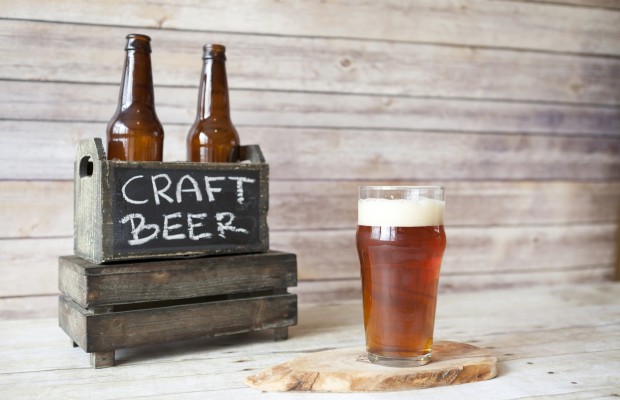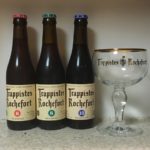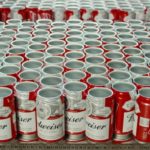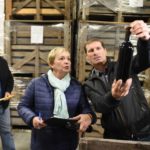Seasons Brewery: How John Gonzales is Building a Dream

While all breweries have a story to tell, we rarely get to hear about them until they’re up and running. John Gonzales is a rarity in the world of brewing: he’s an award-winning brewer who’s just now starting to build his brewery – and he let us in on how things work and the challenges – and surprises – along the way.
Q: Can you tell us a bit about your background in brewing? How/when did you get started? Any special competitions or events you’ve participated in?
A: I am a self-taught brewer. My master’s degrees in aquaculture management and fish nutrition were extremely useful in that sense. The impetus to become an amateur brewer, however, was a necessity. I had previously resigned from my position as an extension agent for the University of Hawaii and sold all my possessions so I could move back to the mainland and marry my wife.
It took me five months to find a job, and that job relocated us to Maryland where I worked as a contractor at the National Institutes of Health in Bethesda, MD. The cost of living was high, my salary went fast, and beer was a luxury I couldn’t afford. I would get bonuses from my employer quarterly. I would use half of the bonus to pay off student loans, half to buy homebrewing equipment.
An IT friend at the time, Brian, worked in the same building. He was a passionate homebrewer who got me going in amateur brewing. Over a year or so, Brian’s chiding pushed enough buttons where I had to show him up. That year I got second place at the M.A.L.T Turkey shootout in 2009 for a Dubbel Chai. Then in 2011, I won second place for my smoked chipotle porter at the Spirit of Free Beer. The following year, I won first place for my smoked chipotle porter, as well as a bourbon barrel imperial porter, at the Spirit of Free Beer. That’s when I knew I was a legitimate brewer, because the first place award for the bourbon barrel imperial porter came with an invitation to the Masters Championship of Amateur Brewing, or MCAB, the following year.
I’ve begun to lose focus on competitions this year as I have focused more on courting potential investors and having samples to offer. Having award-winning beer does help, though.
Q: How did the dream of running your own brewery started?
A: I had always believed that my wife and I would move back to my hometown area of Carpinteria, CA so we could raise our kids by the beach as I was raised. I also missed surfing badly! One day I had this realization that the only aquaculture related jobs available in that coastal region would be in the same field I was working in currently. My competition for jobs then would most likely be college students or recent college graduates who would be happy to work for $30-$35,000 a year. That would have been a huge pay cut for me with minimal upside. So, I decided my best chance at success was to rebrand myself, taking my passion and everything I had learned in life and using it to my advantage in a way that enabled me to live the life I wanted exactly where I wanted to live. Viola, Sessions Brewery was conceived.
Q: What are the biggest challenges in setting up a brewery?
A: Starting a brewery is challenging on so many levels. For those who start the venture fully capitalized, the challenges are pretty standard for everyone: capital costs, local state and federal permits and fees, legal issues, hiring employees, recipe development, account development, etc. But for those like me who start out with limited funds and need to raise the majority of our start-up capital through equity and debt financing, life is different.
Getting a brewery funded in my shoes is akin to climbing the Himalaya’s. I’ve been fortunate with some investors, but I need more. I am sure there are those in the same shoes whom might be going through the same issues but identify different challenges.
Q: Why did you decide to focus on crafting organic beer? Can you tell us a bit about how you plan on implementing that, what resources you’ll use, etc.?
A: I had always been environmentally conscious, to one degree or another, since my days as a kid growing up at the beach. And so when I decided I was to go forward with the brewery venture, I decided to make it an extension of me. Given my awakening, I was going to make the brewery organic.
It’s important to recognize in this conversation that there are several categories of organic certification. If you use at least 75% organic materials to make a product, you can call your product “Made with Organic Materials”. If you use 95% organic materials, you can call your product “Certified Organic”. If you use 100% organic materials, you can call your product “100% Certified Organic” If you use something that is not certified organic, gypsum or calcium sulfate, for example, it has to be allowed for that item you are making.
So the National Organic Program is very strict with what deviations are allowed in making a certified organic product. In the end, it helps to ensure the public that when they are buying something with the organic label, that product whether it is tomatoes, beef, or olive oil, has adhered to a series of specific and strict rules and regulations to ensure the public is buying what is being advertised.
Q: You’re also planning on producing a series of gluten-reduced beers. What makes these beers special and why are they part of your plan?
A: Four years or so ago we learned that my wife was gluten-intolerant. The idea of running a brewery and pizzeria (that was the original concept by the way), and not having products that my wife could enjoy seemed wrong. So I set out to craft gluten-free beers using organic white sorghum, but the finished products never had the right mouthfeel.
When I learned of the enzymes for making gluten-reduced beer, I set out first and foremost to read the scientific peer-reviewed publications to make sure I understood the science behind the process. Once satisfied with the data, I set out to make gluten-reduced beers. I first tested the products on my wife. She had no ill-effects, so I then got home test kits. The samples passed, but the results were colorimetric, not quantitative. So then I hired a lab that I had worked with in my graduate days at Purdue to run the R5 competitive ELISA test on my samples. They came back as having less than 10ppm gluten. Viola, I had a product that tasted just like beer but appeared a safer alternative for someone who either preferentially chooses to, or medically must, abstain from gluten. So now my wife could have a beer at the brewery and not feel excluded.
It’s important to me that what I do, what I make, what I offer, can be enjoyed by all. Offering gluten-reduced products provide that opportunity and enable us to grow into a larger community. And as the saying goes, no man (read brewery) is an island unto himself.
















